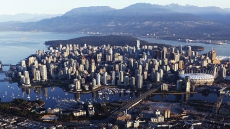A 2018 Canadian Bureau for International Education Student Survey found out that 96 per cent of international students recommend Canada as a study destination.
Canada’s influx of international students has been increasing every year. According to data from Immigration, Refugees and Citizenship Canada, there were 572,415 international students in Canada at all levels of study in 2018.

The country has seen a 154 per cent increase in international students from 2010 to 2018. An excellent education system, multiculturalism, environmental beauty, and effective law and order are major factors that draw students from around the globe to the country. A 2018 Canadian Bureau for International Education Student Survey found out that 96 per cent of international students recommend Canada as a study destination.

According to the survey, the top three reasons for international students to choose Canada are:
(1) The quality of the Canadian education system
(2) Canada’s reputation as a tolerant and non-discriminatory society
(3) Canada’s reputation as a safe country.
“Canada has become one of the most desirable places to study worldwide. Compared to the historically strong international education markets including the UK, USA and Australia, Canada has more affordable tuition fees, an overall high quality of program offerings and access to the Canadian job market after graduation,” says Gareth Jones, Manager, International Marketing & Recruitment at Douglas College. He further adds that students are more keen to study in Canada due to the eligibility of receiving a 1-3 year post-graduate work permit.

For Ali Najaf, a recent Simon Fraser University (SFU) graduate with a Bachelor of Business Administration, Canada’s multiculturalism was also a key factor that encouraged him to study in the country. “It is one of the few countries where diversity is not only accepted but celebrated.”
Jones agrees, “Canada has a reputation for being a safe, welcoming and multi-cultural society, so the pathway to immigration is oftentimes seen as a major driver in the decision-making process for these students.” Colleges and universities also play a big role in helping international students embrace the student life in Canada. Jones shares that Douglas College’s international department staff is trained to provide services that guide students through difficult times and help them integrate with the college and broader community. These services include, but are not limited to opportunities such as excursions, intra-mural sporting events and access to supports to improve academic success. “Our goal is, and will always be, helping our international students thrive in their new environment.”

Though there are benefits to a Canadian education, international students however have to deal with numerous challenges along the way. To begin with, many of these students have never lived in another country, or even on their own before. The initial stage of settling down and getting accustomed to the surroundings can be difficult for some. Japneet Kaur, an international student doing an associate degree in General Arts at Columbia College, says she was mentally not ready to live away from her family. “Honestly all students are just not prepared for that homesickness and much more.” Language can be a barrier too as Nikhil Maria reveals that he had a difficult time communicating with others as soon as he reacehd Canada. “I had never travelled by myself before and the customs people at the airport could not understand my accent properly, nor could I understand what they were saying,” recalls the fourth-year student studying Business Administration at SFU.

Ali’s biggest challenge was integration into the wider community due to different culture and norms. He was surprised to see students calling professors by their first name. “I never called a professor by their name; we always used Sir and Madam. It took me about three weeks to get used to referring to one of my instructors as Steve.” Japneet believes prior research on colleges, accommodation or transit can make the journey easier. “A student should download a transit app before arrival and look for routes which have more services and find accommodation accordingly, or else it could get very tough with time. Also, read about the country or city’s culture you are going to beforehand.”

Another issue for international students is maintaining the Canadian lifestyle. “The standard of living and education is not manageable at all. I would not be able to support myself without the financial aid,” states Nikhil. Ali adds that education and standard of living in Canada are expensive when you convert the amount of your tuition to your home country currency. “It is not manageable without the support of funding from family and doing part-time work, but there is support available from universities in the form of scholarships and bursaries.”

There are also cases of international students being mistreated, underpaid or suffering from depression and other mental health issues. “Students are being exploited and being taken advantage of in residency cases or as employees. They also find themselves not prepared for the education system here, or misled in immigration concerns, which then leads to stress and depression,” points out RCMP officer Baltej Singh Dhillon. Dhillon is a part of newly-founded One Voice Canada Society which caters to the needs and struggles of international students.

One Voice Canada comprises of many organizations and professionals who have come together to assist and support these students who find themselves alone in Canada and are taken advantage of. “Some of the issues that we are dealing with include sexual exploitation, employment exploitation and residential exploitation of international students,” reveals Dhillon, who believes that financial adequacy is an issue and does lead to students becoming vulnerable to exploitation.
The government is also doing its part; working in Canada after graduation has now become easier for international students. In February 2019, the government announced changes to the Post-Graduation Work Permit (PGWP) program – students can now apply for a PGWP up to 180 days after finishing their degree or diploma.




